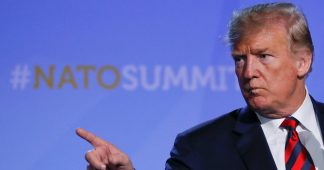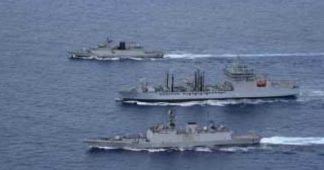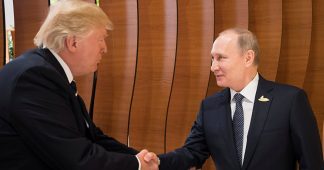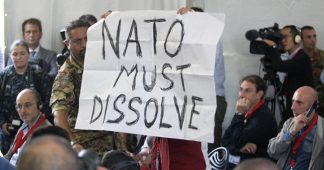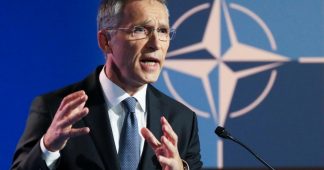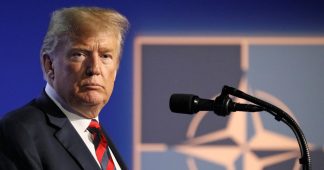NATO summit: confronting China, Russia and the world
By
The North Atlantic Treaty Organization ended its summit in Brussels on June 14 and issued a communiqué listing achievements since the last summit and a blueprint to take the military bloc to its next one in 2022. The representatives of the thirty-nation alliance also endorsed the 67-page document used to prepare the summit’s discussions and decisions, NATO 2030: United for a New Era. In turn the summit tasked NATO with elaborating a new Strategic Concept to replace that adopted at the Lisbon summit in 2010.
The communiqué is an extensive document consisting of 79 sections; any attempt to systematically examine and analyze those points would be a book-length endeavor.
Instead, the major themes and major points of the summit report will be listed.
There were two qualitatively significant, some would say alarming, innovations in this year’s meeting of the heads of state and government of history’s largest military bloc. First is the repeated, almost obsessive emphasis on NATO’s Article 5 mutual military commitment provision leading up to and during the summit. The prioritizing of that subject suggests a world on the brink of war and hardly (as was expressed, in the negative, in relation to Russia in the communiqué) business as usual.
The post-summit communiqué defines NATO’s core mission as a tripartite one: that of addressing collective defense, crisis management and cooperative security. (Section 1) The bloc itself was defined as “the strongest and most successful Alliance in history,” which “guarantees the security of our territory and our one billion citizens, our freedom, and the values we share, including individual liberty, human rights, democracy, and the rule of law.” (2)
The scope is global in both senses of the term. It is one that might be suitable to the United Nations, but even then could be seen as presumptuous and grandiose.
Section 3 is the first that mentions Russia and China, though hardly the last. The first is accused of “aggressive actions [which] constitute a threat to Euro-Atlantic security”; the second, however, receives a far more benign characterization. NATO pledges to “engage China with a view to defending the security interests of the Alliance.”
China is the subject of two sections, 55 and 56. The first is fairly confrontational (it is criticized for “assertive behaviour [which] present[s] systemic challenges to the rules-based international order and to areas relevant to Alliance security.”); the second is openly amiable (“Based on our interests, we welcome opportunities to engage with China on areas of relevance to the Alliance and on common challenges such as climate change”).
In fact one of the major objections to China in point 55 is that it is “cooperating militarily with Russia, including through participation in Russian exercises in the Euro-Atlantic area.”
Terrorism is dealt with in only two sections (16, 17).
Russia, however, is the subject of seven sections (9-13, 26 and 46) and included in several others: that on so-called frozen conflicts/”occupied territories” in Moldova, Georgia and Ukraine (14); the war in Ukraine (15); on nuclear weapons and other weapons of mass destruction (49); and on conventional arms control (50).
Apropos the above, section 38 emphasizes the role of the bloc’s so-called collective defense policy:
“The greatest responsibility of the Alliance is to protect and defend our territory and our populations against attack, as set out in Article 5 of the Washington Treaty. No one should doubt NATO’s resolve if the security of any of its members were to be threatened…..”
The other nations listed as threats to “Euro-Atlantic security” – the only other nations so labeled – are all neighbors and allies of Russia and China:
North Korea (51), Iran (52), Syria (52, 53) and Belarus (54).
The last comes in for the brunt of the criticism, including for generic “developments…since August 2020” (the presidential election), endangering regional stability and violating international law, human rights, “fundamental freedoms” and “the principles which underpin our partnership.” (Belarus is still technically a member of Partnership for Peace.) The document added: “NATO will remain vigilant of and monitor the implications for the security of the Alliance.” (Regarding Syria, the paper states, “We reiterate our appreciation to our Ally Turkey for hosting millions of Syrian refugees.”)
The communiqué mentions in passing a large number of new NATO commands, centers and initiatives in North America but particularly in Europe. Among them:
- Joint Force Command Norfolk headquarters and Joint Support and Enabling Command in Ulm, Germany
- Cyberspace Operations Centre
- NATO Maritime Security Centre of Excellence in Turkey
- NATO’s Rapid Air Mobility
- New Integrated Air and Missile Defence Centre of Excellence in Greece
- Euro-Atlantic Centre for Resilience in Romania
- Alliance Ground Surveillance Force
- Comprehensive Cyber Defence Policy
- Cyber Defence Pledge
- NATO Space Centre in Germany
- Space Centre of Excellence in France (underway)
- Framework for the South
- Emerging and Disruptive Technologies Roadmap
- Building Integrity Policy and Programme
- Counter Hybrid Support Teams
- More training centers in the Middle East and North after the model of the NATO-Istanbul Cooperation Initiative Regional Centre in Kuwait (planned)
Also discussed are missile defense (27-29, 42-44), increasing NATO’s role in Iraq (20), military integration with the European Union (21, 57, 64, 65), hybrid and cyber threats (31 and 32, respectively), space (33), Forward Presence battlegroups in Estonia, Latvia, Lithuania, Poland and Romania (34), the Arctic (34), increased military spending (35. “Since 2014, European Allies and Canada will have added 260 billion US dollars by the end of this year”), nuclear weapons in Europe (40, 41. “As long as nuclear weapons exist, NATO will remain a nuclear alliance”), membership for Enhanced Opportunities Partners Georgia (68) and Ukraine (69), the Balkans (70, 71), increased cooperation with Enhanced Opportunities Partners Finland and Sweden (71) and strengthening relations with partners in the Asia-Pacific region and Latin America (73) and in the Middle East and North Africa (74), including Libya (76).
The Article 5 war clause was evoked in reference to non-traditional subjects such as space (33. “Such attacks could lead to the invocation of Article 5”) and cyber attacks (32. “We reaffirm that a decision as to when a cyber attack would lead to the invocation of Article 5 would be taken by the North Atlantic Council on a case-by-case basis”).
In the partnership section, although offering a partnership to India is mentioned in the NATO 2030 document nothing was said of that country.
Published at antibellum679354512.wordpress.com
